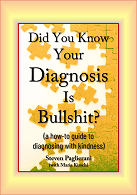
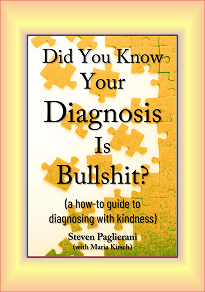
An excerpt from: Did You Know Your Diagnosis Is Bullshit (a how-to guide to diagnosing with kindness)
Like the previous book, this one has taken me several years to write. I also expect it to be the most controversial so far. Claiming all prior diagnositic manuals are filled with bullshit is nothing new; most people feel this way. Claiming this book offers a far better, more kind, more scientific way to diagnose? That's saying a lot.
Then there's the video I've placed on this book's menu page, elsewhere on this site. I recorded this video years before I began writing this book. Nowhere does it mention anything about diagnosis. So why choose this video then? Because it explains the entire underlying basis for this book. The idea that pictures can transmit understandings in ways the best words never can.
This is why this book includes 133 drawings. It's aslo why this book is printed in color. These colors have meanings. Together, these drawings enable you to diagnose the mind in never-before understood ways, as they use fractal patterns. These fractal drawings are what allow you to diagnose with kindness. And like all things fractal, once learned, you'll retain this knowledge for the rest of your life.
.png)
The Art of Diagnosis (what can we learn about . . . ?)
Can Diagnosis Become a Science?
Existing diagnostic manuals base their diagnoses primarily on how similar conditions differ. This idea, which therapists call, “differential diagnosis,” should in theory have been one of the more useful aspects of these books. Unfortunately, none of these books define a scientifically sound set of universal diagnostic criteria. Overlaps and omissions, combined with poorly defined terms, make diagnosis more art than science.
Rectifying these errors and omissions will be the main goal of this book—to develop a universal set of diagnostic criteria such that diagnosis becomes more science than art. To do this, we’ll need to find better ways to describe and define both existing, and future, diagnoses. Admittedly, this will be an ambitious goal.
We’ll also need to address a second problem, something no prior diagnostic manual has offered—a way to distinguish between clinically significant features and what is normal. In part, this lack was due to a political problem. Prior books were created by consensus. To avoid conflicts between the various contributors, they omitted the component critical to defining “normal.”
The component? A personality theory. No such theory, or even partial theory, is ever directly mentioned. Ironically, beneath each and every word in these manuals lie assumptions regarding the nature of personality. Strangely, nowhere do these authors enumerate the assumptions behind their claims. Again, a lack of science.
How did these authors think it possible to omit any mention of personality and still diagnose? They chose to focus on functioning—and the lack thereof, as the principal diagnostic criteria. To these authors, and based on the content of these books, who people are as persons matters little. All that matters is whether they function poorly or well.
In large part due to these books, eventually, functioning came to be the main measure for mental health. At which point, the diagnostician’s primary task became assessing people for how well or poorly they function. No surprise then that all diagnostic manuals organize diagnoses into vaguely defined categories of poor functioning. Here differences in personality play no role in evaluations, and anything less than excellent functioning raises questions as to whether to diagnose.
This points to what may be the most significant omission in these manuals. Nowhere do they scientifically describe the actual mechanisms of injury or healing. The principal goal of diagnosis is to measure people’s wounds—and to a true scientist, what you can’t describe scientifically you can't possibly measure. So where are the scientific descriptions of the mechanism of wounding? They offer none.
To me, this particular omission is the most egregious of all. How could anyone claim to understand diagnosis if they can’t describe the mechanism of wounding? And no, it’s not enough to say injuries correlate to trauma. If this were true, how can the same traumas generate different symptoms in different people? Indeed, how can painful events which cripple some people and not even wound others?
Strangely, none of the eight diagnostic manuals acknowledge this omission. It seems we’re just supposed to overlook the lack of actual science. And please, do not bore me with references to patently pseudo-scientific statistical data. Does no one see how these generalizations resemble the standard complaint against newspaper astrology—that by making claims broad enough, no one can say they are wrong?
Rather than seeking real science then, these authors spent their time arguing over words. How should we properly divide-up and name these “dys-functions?” What should we call them? Over time, they increasingly sorted human suffering into more and more vaguely defined categories. The six types of Schizophrenia. The eight paraphilias. The nine types of personality disorders. Or the ten, if you count the NOS category (not otherwise specified). And in case you don't know, NOS is pseudo-scientific code for “we have no freaking idea what to call this kind of suffering—let alone any science to back up what we’re claiming.”
Arguably, a clue to the source of this confusion lies in the never-mentioned elephant-in-the-room. The principal authors of these diagnostic manuals are American psychiatrists. Meaning what? Generally, American psychiatrists are good-hearted people whose main wish is to remedy suffering. Indeed, I’ve personally had two change my life, the two to whom I’ve dedicated this book.
In most cases though, unlike their European counterparts—whose educations require them to be trained as both MDs and psychotherapists, in America, the talk therapist’s training part is either optional at worst—or minimal at best. This makes most, not all, American psychiatrists resemble carpenter-tool designers who have never hammered a nail—or plumbers who have never removed the tank cover from a toilet. Certainly, this is nothing like the European founders of their profession—Freud, Jung, Adler, and Janet. These men were both practicing MDs and practicing psychotherapists, as well as being published personality theorists who made significant contributions to that profession as well.
Does this sound like nonsense? Am I pissing you off? Then consider this. This same opinion was being expressed even in 1952, the year the first diagnostic manual came out. By whom? By a noted psychiatrist—and arguably the finest historian of the profession—a man whom I see as far more qualified than I to voice this opinion.
Consider what this man had to say, even back then.
A Comparison of European and American Psychiatry
After a three months trip in the United States in 1952, I was asked by some Swiss colleagues to tell them about my observations in America, and I tried to describe the difference between American and European psychiatry, seen from the point of a Swiss. Later, when I returned to the United States, a friend suggested that I translate the talk I gave in Switzerland into English. Thus, let us imagine that we are in Zurich, and that we are Swiss people interested in hearing about a very different kind of psychiatry.
A European psychiatrist traveling in America is soon overwhelmed by such a wealth of new impressions, experiences, and human contacts, that he easily loses the general picture. Then a little incident will suddenly give him a clue. This happened to me a few weeks after my arrival, while attending a staff meeting where a case history was being discussed. A young psychiatrist was reporting on the life history and troubles of a patient and had begun to discuss the diagnosis, when the leader of the meeting gently interrupted him with this question: “What are his problems, and what can we do for him?”
This meant that the nosologic discussion, interesting as it was for European psychiatrists, was considered idle talk and a waste of time by an American. The interruption meant “Let us go to the question,” it was the voice of the principle of reality. It occurred to me then that American psychiatry differs from ours fundamentally in the way of approaching the subject. (Ellenberger, Henri MD. “A Comparison of European and American Psychiatry” Bulletin of the Menninger Clinic; Topeka, Kan. Vol. 19, Issue. 2, Mar 1, 1955)
“Life history?” “Troubles?” Not relevant? Get to the point?
“What are his problems and what can we do for him?”
Some would argue, psychiatrists today do discuss those “not relevant” questions and this is true—but only for the few psychiatrists professionally trained in personality and psychotherapy.
By those untrained in psychotherapy and personality, those for whom assessing functioning is all that matters? By them, not so much. The point is, would you trust a McDonald’s cashier to advise you on managing your retirement account? Personally, I’d rather not. How then has it become acceptable for human beings to be judged as mentally well or broken, based mainly on a book authored by people untrained and unskilled in either psychotherapy or personality?
Books by Steven Paglierani
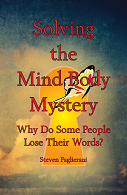
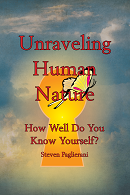
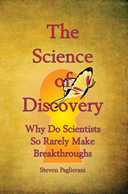
.png)
